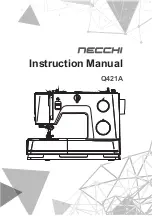
Chapter 9
Full Frame Readout
51
EAR99
Technology
Subject
to
Restrictions
Contained
on
the
Cover
Page.
9.1
Calculating Image Acquisition/Readout Time
The total time required to acquire and readout a full frame of data at full resolution is
calculated as follows:
(1)
t
FF
= t
R
+ t
exp
+ t
c
where:
•
t
R
is the CCD readout time;
Refer to
Section 9.1.1, CCD Readout Time
, for additional information.
•
t
exp
is the exposure time;
This is a user-defined value, and is configured in LightField on the Common
Acquisition Setting expander.
•
t
c
is the sum of the shutter opening and closing compensation times.
9.1.1
CCD Readout Time
LightField automatically calculates the readout time, including Region of Interest (ROI)
operations and an approximation of overhead times.
CCD readout time is approximately calculated as follows:
(2)
where:
•
t
R
is the readout time;
•
N
y
is the number of rows within the CCD;
•
N
x
is the number of columns within the CCD;
For example, if a CCD is 2048 columns wide, N
x
= 1024.
•
t
i
is the time needed to shift one line into the shift register;
•
t
pix
is the time needed to process one pixel.
A subsection of the CCD can be read out at full resolution, sometimes dramatically
increasing the readout rate while retaining the highest resolution in the Region of
Interest (ROI). To approximate the readout rate of an ROI, in Equation 2 substitute the x
dimension of the ROI in place of the dimensions of the full CCD. Some overhead time,
however, is required to read out and discard the unwanted pixels.
9.2
Experiment Timing
For many experiments, the acquisition of quality/useful data is dependent on precise
synchronization with external experiment events. Using the EXT SYNC input on the rear
of Lansis, externally-generated trigger pulses can be used to control:
•
Shutter operation;
•
Data readout.
This section describes how to configure Lansis to use incoming trigger pulses to
precisely control experiment synchronization in Full Frame mode.
t
R
N
y
t
i
N
y
N
x
t
pix
overheads
+
+
=
















































